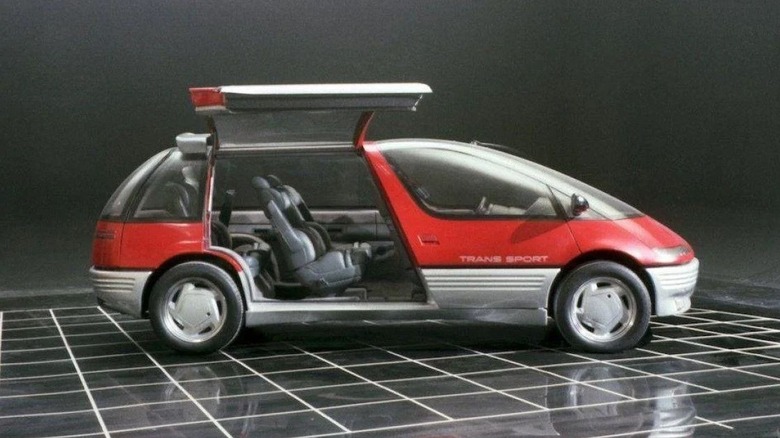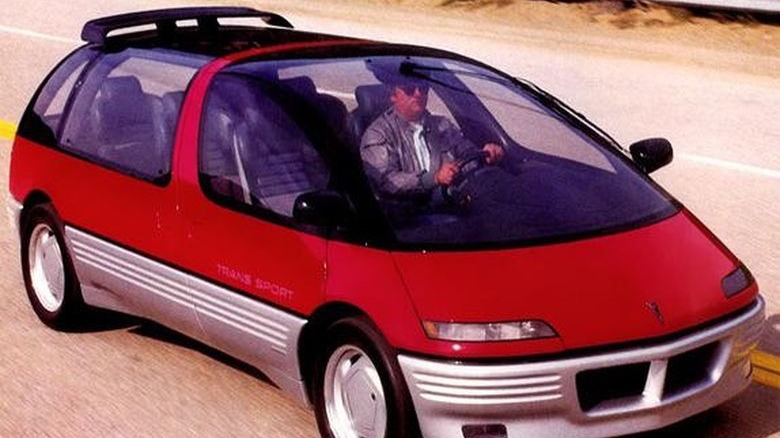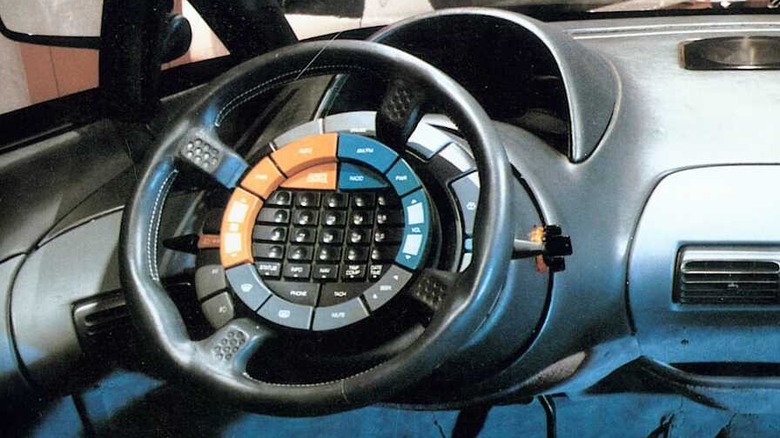The Pontiac Trans Sport Concept Was A Futuristic Minivan Ahead Of Its Time
The Pontiac Trans Sport minivan was an apparent attempt to cash in on the name brand of its iconic Trans Am sports car. The Trans Sport was no Trans Am, though, and the version we actually got is not the one we could have had. Or deserved.
Between 1990 and 1996, Pontiac jumped onto the minivan bandwagon (minivanwagon?) by offering the general car-buying public a family truckster that looked more like a "dustbuster" than a gangbuster. This is precisely what the Trans Sport would have sold like if General Motors had decided to make the concept version instead.
Most concept cars are designed and built before the production version in order to provide a tangible proof of concept. It's right in the name. That was not the case here. It is widely believed that the concept van was made after GM had finalized the design and put it on the production schedule. The Trans Sport concept first appeared at the Chicago Auto Show in 1986 and was shown with all kinds of cool bells and whistles that GM never intended to include in the final production model. Plus, it looked pretty different. It was built for one reason: to get the public hyped for what GM hoped would be a cash cow. Just in case you were wondering, that is the very definition of bait and switch.
This concept was ready for take off
The final production model we know today did look different from most of the other Chevy Astro Van-styled vehicles on the road at the time. The steeply sloped, raked nose — reminiscent of Disneyland's monorail, a high-speed bullet train — really did set it apart. However, the back half was all 90-degree angles and still made it look like a shoebox. The fusion between the front and back was just... off.
Yet, it was nowhere near as radical looking as its concept counterpart. In fact, while the concept more closely resembled an actual futuristic car, the production model was merely a peek through some curtains into the future. The concept van maintained a similar steeply raked nose, but there wasn't a single 90-degree angle to be found anywhere. All the corners and edges were rounded and smooth, evoking an almost capsule-like appearance.
Most of the van's upper half was made of glass windows, which wrapped up into the roof (via Jalopnik) from all directions and gave rear occupants an open-air feel. The front window and cabin area looked straight off a helicopter. Between the dual-paned glass was liquid crystal that could be darkened or lightened with the flip of a switch. And instead of a boring old conventional sliding door on the passenger side (like the production model had), the concept came with a single, sizeable gull-wing opening door you would find on expensive high-end sports cars.
Speaking of sports cars, a spoiler on the roof provided downforce and gave it an extra bit of panache. The slotted rear taillights also had a unique feature wherein they would turn red when stopping, show yellow when the car slowed down, and turn clear when backing up.
Too far ahead of its time (and too expensive to make)
The concept was loaded with tech. The instrument cluster above the steering wheel was displayed on a cathode ray tube (CRT) monitor, but the speed and other vehicle data could be splashed onto the windshield via a "heads-up" display. A small personal computer, complete with a pop-up screen and keyboard, sat on the passenger side. According to Motor Trend, it "could access weather and hazard reports, navigational information, and could even book travel reservations, much like today's OnStar System."
An overhead screen replaced the rearview mirror and showed how far approaching vehicles were from the back of the van. It even had a Nintendo system (via Jalopnik) onboard. All of the controls were located in a central hub on a steering wheel loaded with buttons. None of these things made it to the production model but foreshadowed features that would eventually become standard equipment (via Motor Trend).
And the engine under the hood of the concept was different. An all-aluminum, turbocharged 2.9-liter V-6 engine kicked out 235 horsepower, similar to the one in the 1985 Fierro GT prototype thought by some to have been the "Corvette Killer" (via Motor Trend). The production model came with a 3.1-liter V-6, only capable of producing 120 horsepower.
The final production model included a "Fiero-inspired space-frame chassis" (via Motor Trend), composite body panels that wouldn't rust or dent, and the same front-drive layout as the Chevrolet Lumina APV and Oldsmobile Silhouette. Why? Because GM shared its production line with Chevy and Olds (via Jalopnik).
And therein lies the key to the whole bait and switch. It was cheaper for GM to build a minivan that was essentially the same as the others on the road so everyone could share the cost.


